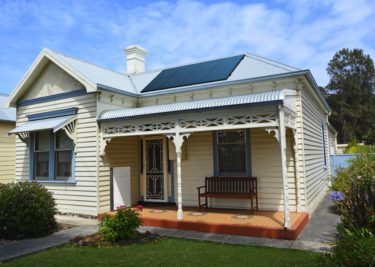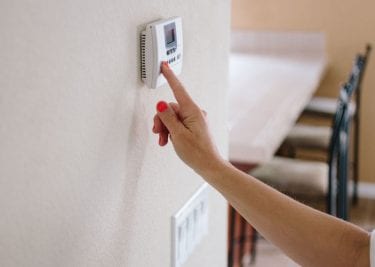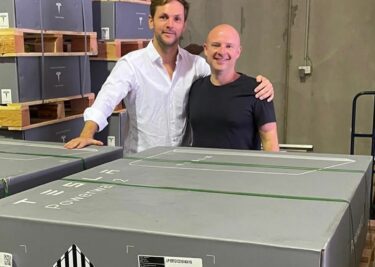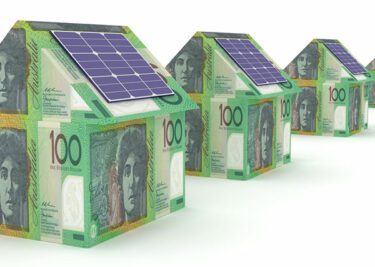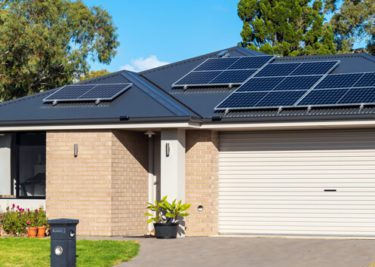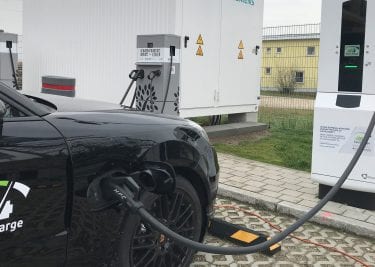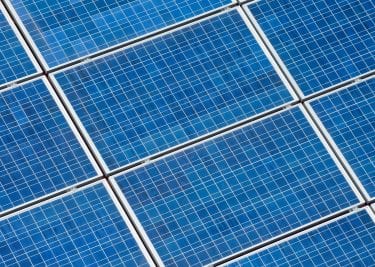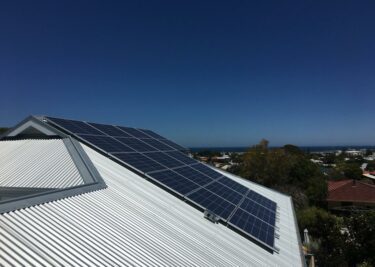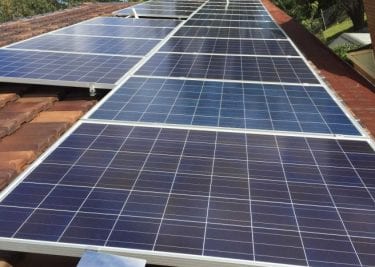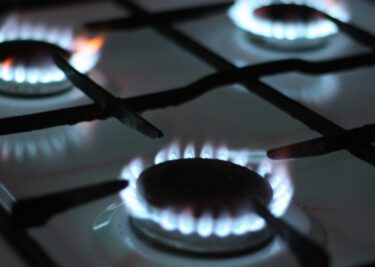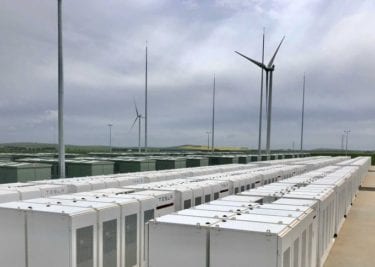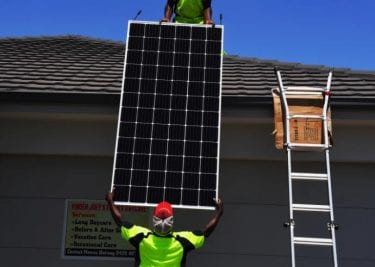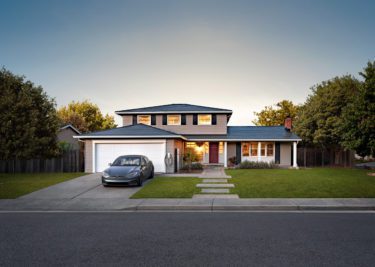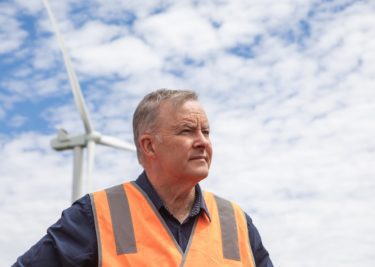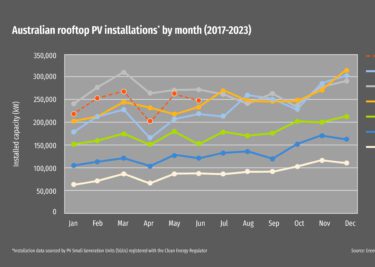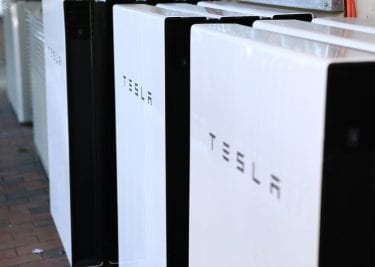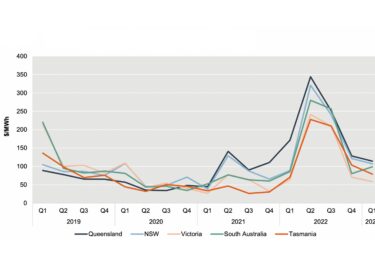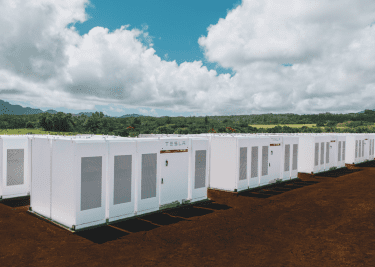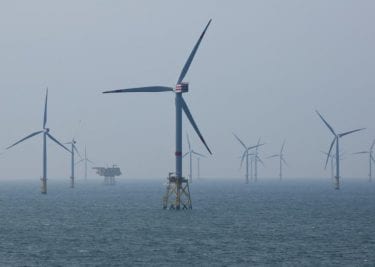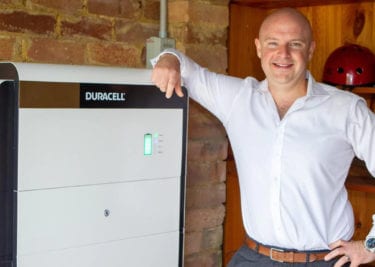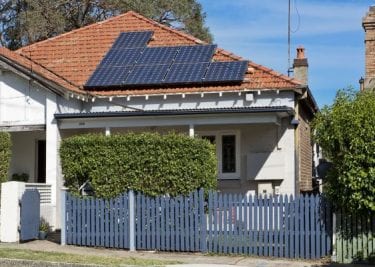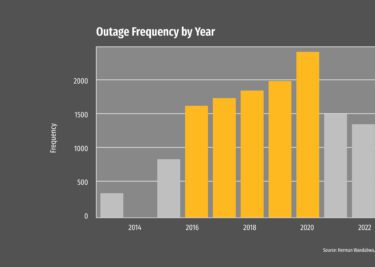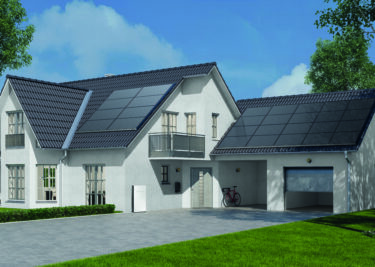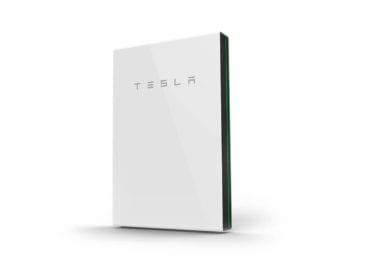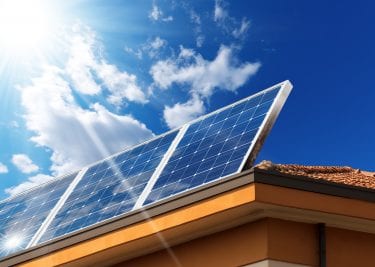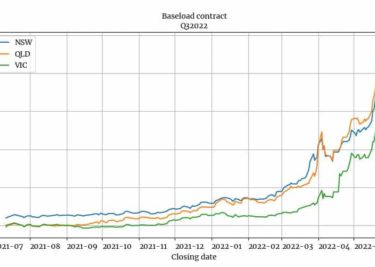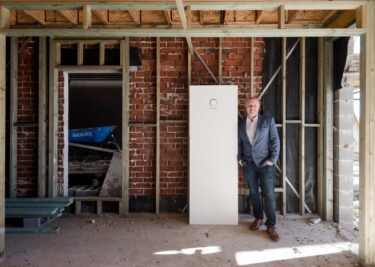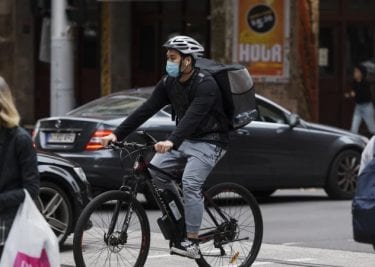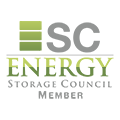The fall of solar feed-in tariffs (FiTs) is continuing across the nation. In late February 2022, Victoria’s energy regulator announced another slashing of the state’s FiT. The minimum rate retailers have to pay rooftop solar exporters has been reduced from 6.7c/kWh to 5.2c/kWh – to take effect in July. However, Victoria is not alone. Australia-wide FiTs are on a downward trend as a result of the sheer number of solar households that now exist (Australia is a global leader in rooftop PV uptake).
Thankfully, solar curtailment at the hands of the old, narrow, rickety grid does not spell the end for solar uptake, far from it. After all, it is not that the age of the solar household is coming to an end, but that the age of the solar+storage household is just beginning.
Over the last decade the price of solar has dropped dramatically, making its installation a no-brainer to anyone under the sun, and the fall of solar feed-in tariffs inevitable on a constrained grid. The same thing is now happening for home battery storage systems like Tesla Powerwall. And as FiTs decrease and it becomes less attractive to send your excess solar energy to the grid, it’s making more and more sense to store all that excess solar the household doesn’t use during the day for use during the night. After all, you’re generating solar power and you may as well put it to good use!
In this blog we’ll take you through the FiT outlook across Australia, and how combining battery storage with your solar panels can make up the lost savings on your electricity bill and further reduce your carbon footprint.
Batteries FiT the bill
According to the Essential Services Commission the fall in solar feed-in tariffs “is mainly due to lower wholesale electricity prices. Wholesale prices have gone down by the most during the middle of the day when most solar is exported.” So, the downward trend in Victoria since 2020 is a story that is being played out across much of the nation.
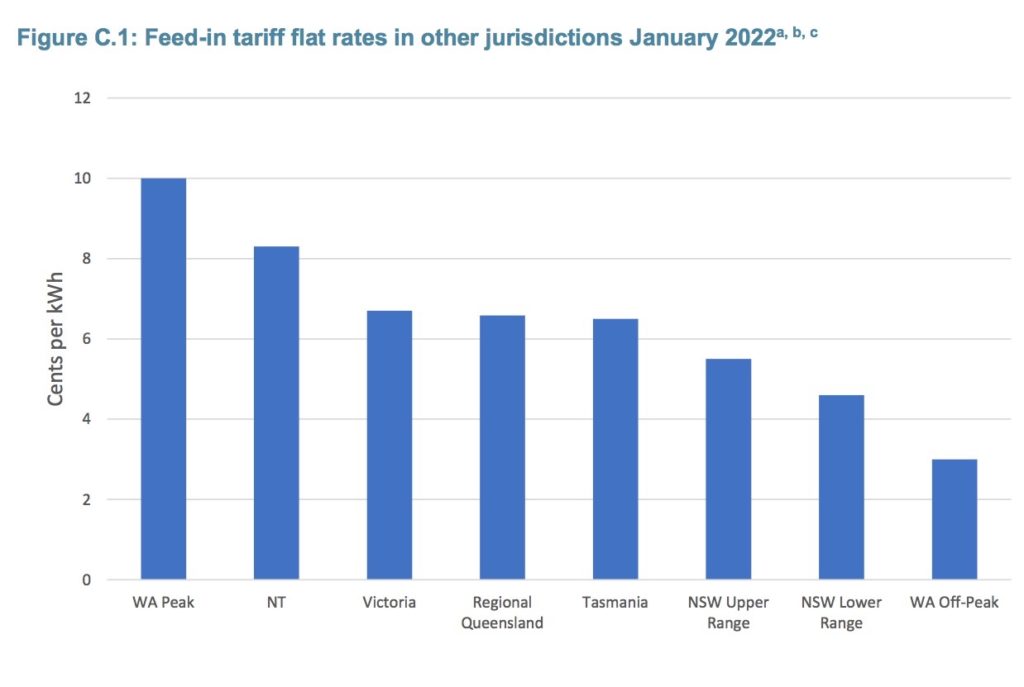
Indeed, in some places where the grid is particularly congested there are reports of no FiT returns at all. However, even if you live in a jurisdiction in which FiTs remain lucrative, or if you have an existing solar system and are thus tied to a long-term FiT, a home battery would still be able to make the most of the renewable energy your household uses and exports. A Tesla Powerwall’s time-based control feature means it can learn and predict the cost of energy over time, enabling it to charge when solar is abundant or energy from the grid cheap, and discharge that energy at periods when the price is highest.
Unfortunately, at time of writing there are no Federal rebates for battery storage systems, although the Cheaper Home Batteries Bill 2022 currently before parliament could change that. If the bill passes it could cut the cost of residential battery storage systems like Tesla Powerwall by up to $3,000. There are however, a range of opportunities available at the state level which ensure a Tesla Powerwall is worth it in 2022.
See below a look at the fall of solar feed-in tariffs in your jurisdiction.
What are the solar feed-in tariffs in Victoria?
As mentioned at the top, in Victoria the Essential Services Commission sets a mandatory minimum feed-in tariff for households, and that minimum is dropping from 6.7c to 5.2c per kWh on July 1 2022. However, maximum FiTs in the range of 7-10c/kWh are still available from some retailers, depending on the size of the system, and if you can meet certain special stipulations. Be aware, these special stipulations are sometimes only mentioned in the fine print of your electricity contract!
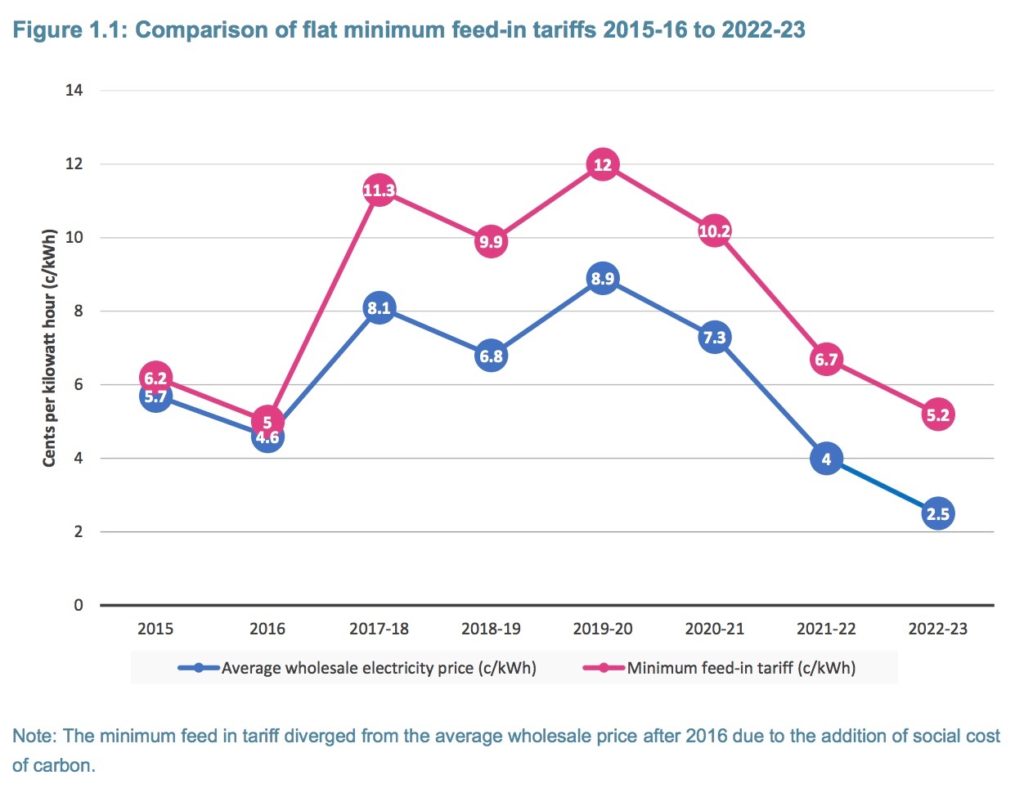
What are the solar feed-in tariffs in New South Wales?
In NSW there is no set minimum FiT rate, although according to the NSW Independent Pricing and Regulatory Tribunal (IPART) the benchmark range is 4.6-5.5c/kWh. IPART notes that its benchmarks have been decreasing for three years “because wholesale prices are falling.” This is being driven by increased solar penetration, which has suppressed demand for electricity from the NEM. IPART also observed that FiTs are likely to stay relatively low over the medium term due to the low wholesale prices in the middle of the day thanks to solar uptake.
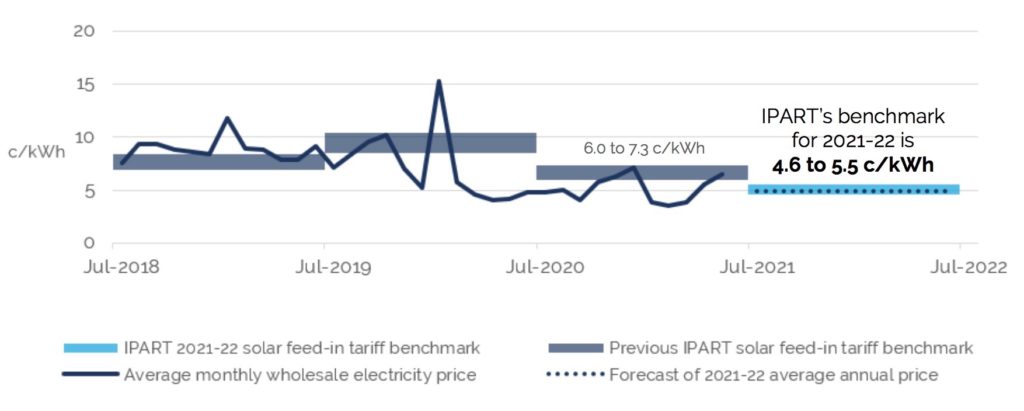
What are the solar feed-in tariffs in Queensland?
In Queensland, solar FiTs are divided between regional rates and rates for southeast Queensland (SEQ) customers, the latter of which is deregulated.
For regional customers a new FiT for small-scale PV owners for 2022-23 is due in May 2022. Until then the 2021-22 FIT at 6.583c/kWh. The Queensland Competition Authority (QCA) noted that this figure is 16.2% lower than the previous FiT in accordance with the downward trend “driven mainly by a decline in both wholesale energy costs and ancillary services fees…primarily due to the large amount of renewable generation entering the NEM.”
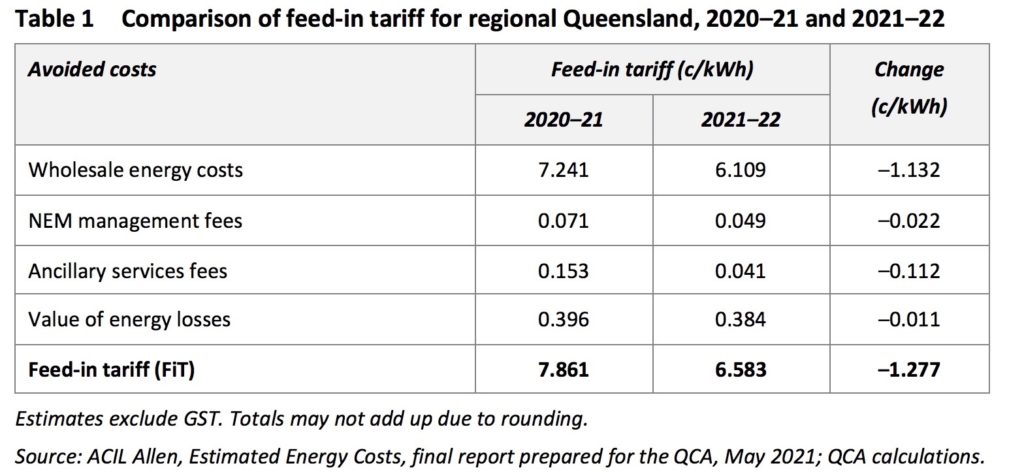
For SEQ customers, according to the QCA’s latest report in October 2021, the number of retailers offering plans with FiTs continued to increase in 2020-21, but the “average residential FiTs in SEQ continued to decrease in 2020-21, as wholesale energy costs declined. By the June quarter of 2021, the market average decreased to 6.8c/kWh (from 8.5c/kWh in the June quarter of 2020.)”
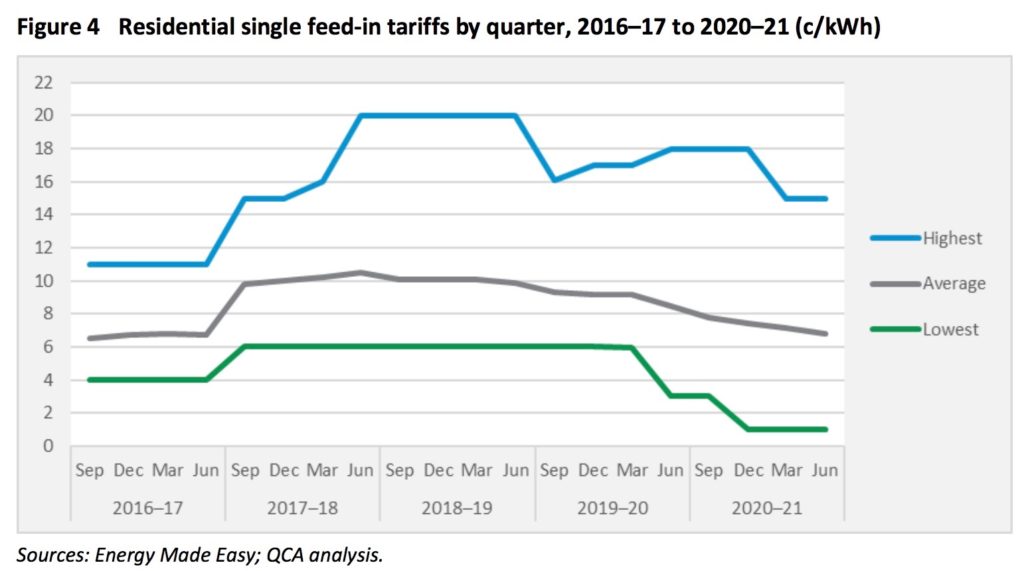
What are the solar feed-in tariffs in the Northern Territory?
The Northern Territory Government announced a new standard FiT of 8.3c/kWh in April 2020 which applies to all business and residential solar installations up to 30kW capacity. This was a significant drop from its previous standard FiT of 26.05c/kWh, which no exists as the “Premium”. The commercial “Premium” however, is 30.32c/kWh.
What are the solar feed-in tariffs in South Australia?
There is no minimum FiT rate in South Australia, although the Essential Services Commission of South Australia (ESCOSA) does have a monitoring regime. ESCOSA’s latest monitoring report noted that the highest and lowest FiTs have been gradually decreasing over the last three years. Over that time the range of FiTs have decreased from 6.8-23c/kWh (2018-19), 5-23c/kWh (2019-20) and 2.1-22c/kWh (2020-21).
What are the solar feed-in tariffs in Tasmania?
In Tasmania the Office of the Tasmanian Economic Regulator (TER) set a minimum Fit of 6.5c/kWh until June 30 2022. The TER noted that the “2021-22 feed-in tariff rate is 23% lower than the 2020-21 rate. The lower rate is due to a 24% decrease in the wholesale electricity price”.
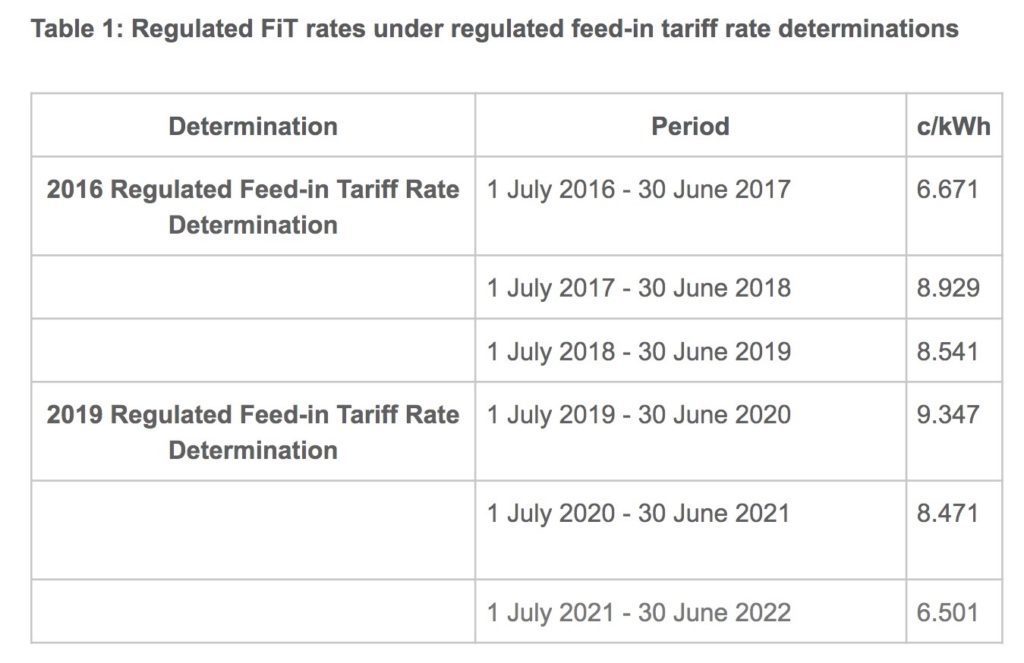
What are the solar feed-in tariffs in Western Australia?
Like some other jurisdictions, Western Australia’s Distributed Energy Buyback Scheme (DEBS), which kicked off in November 2020, has different rates for different times of the day. According to the Australian Government Department of Industry, Science, Energy and Resources, electricity exported between 3pm and 9pm will earn 10c/kWh through DEBS, while electricity exported at other times will earn 3c/kWh (this rate is only 2.75c/kWh for Synergy customers).
These prices represent significant discounts from the previous Renewable Energy Buyback Scheme (REBS). Under REBS the FiT in Perth and the south-west region was 7.135c/kWh. While Horizon REBS solar customers were receiving between 7.14-51c/kWh depending on their location.
What are the solar feed-in tariffs in Australian Capital Territory?
If you locked in your solar system before July 2021 you should still be on a FiT between 30-45c/kWh. But ACT no longer regulates its FiTs and now the average FiT in the ACT is somewhere between 6-9c/kWh.
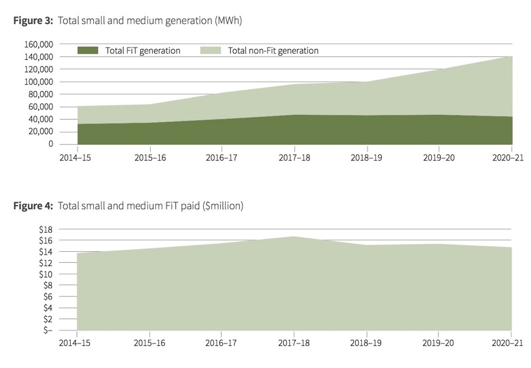
Stay FiT with Tesla Powerwall
As you can see, the overall trend nationwide for FiTs is downward, but the solar boom is far from over. Indeed, thanks to the decreasing cost of home battery systems, the rise of solar is only just getting started.
FiTs are no longer the solar incentive they once were, but that is not the case if the energy you’re exporting is during the peak hours of energy demand (when a solar system without a battery would be calling it a night). And what is more, with solar allied to a home battery storage system like Tesla Powerwall, you’ll get far more out of your solar investment than what electricity retailers are willing to give back to you. In fact, one of the great things about combining your solar system with Tesla Powerwall is that you’ll never feel like you’re under the thumb of electricity companies again!

